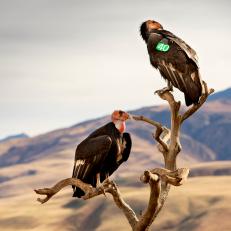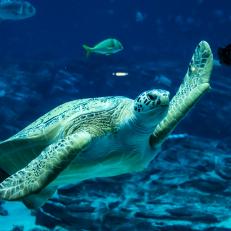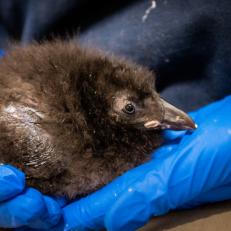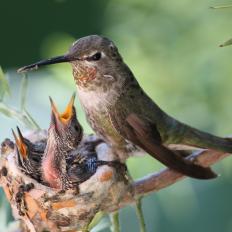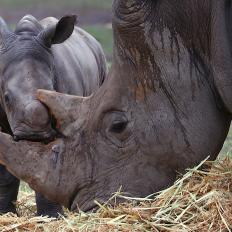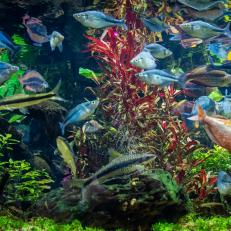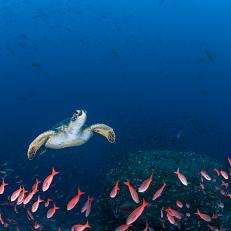Meet the Animals of the Galapagos Islands
Hundreds of years after Charles Darwin's revolutionary research, the Galapagos Islands remain a premier destination for wildlife viewing, conservation, and biodiversity. This volcanic archipelago lies 600 miles off the coast of Ecuador, in the Pacific Ocean.
Meet the animals who call these islands home.
Galapagos Islands
97% of these "Enchanted Isles" have been declared a national park. In fact, Galapagos National Park was established more than 60 years ago and has been incremental in scientific research and protecting the plants and animals native to the islands. The Galapagos' surrounding waters are part of a UNESCO Biosphere Reserve. The archipelago and its surrounding waters are home to almost 9,000 species and several active volcanos. Learn more about some of the incredible animals native to the Galapagos.
Galapagos Giant Tortoise
The islands' namesake is possibly one of the most famous inhabitants in the Galapagos. It is the largest living species of tortoise, with 15 subspecies. The biggest Galapagos Giant Tortoise on record weighed 880 pounds and was over 6 feet long. These reptiles can live well over 100 years in the wild.
Marine Iguana
The marine iguana, also known as the sea iguana or saltwater iguana, is found only on the Galapagos Islands. They are the only lizards on earth, who spend time in the ocean, foraging for algae that make up most of their diet. Because of the high salt concentration in their food, marine iguanas filter their blood through their nose– sneezing out excess salt, sometimes causing salt crystals to form on their snouts.
Sally Lightfoot Crab
Sally Lightfoot Crabs, or Grapsus grapsus, are found along the western coast of South and Central America. They play a vital role in the Galapagos ecosystem– eating ticks off marine iguanas and keeping the shore clean of organic debris by feeding on them. They are extremely agile, able to run in four directions and jump from rock to rock. Graspus graspus are found in large groups all around the shallow waters of the islands.
Galapagos Flamingo
Galapagos flamingo are a large species of flamingo closely related to the greater and Chilean flamingos. Like all flamingos, their pink color comes from their brackish diet of shrimp. Their lifespan can reach up to 50 years.
Galapagos Green Sea Turtle
The Galapagos green turtle is the only turtle species that breeds and nests in the Galapagos. Seen in the coastal waters all throughout the archipelago, they differ from other turtles due to their serrated lower jaw and single pair of scales covering their eyes.
Galapagos Land Iguana
The Galapagos Land Iguana is endemic to the islands. This large lizard species has a short head and powerful hind legs. Dining primarily on prickly pear leaves and fruit, the Galapagos Land Iguanas are known for their mutualistic relationship with finches, who are often found atop the iguanas' backs eating ticks from between their scales.
Blue-Footed Booby
Blue-footed boobies are marine birds native to the eastern Pacific Ocean. There are three booby species found on the Galapagos. These large distinctive birds typically nest on the rocky shores and cliffs of the islands. Their excellent vision and aerodynamic shape make them efficient hunters– able to dive for fish at a speed of 60 miles per hour, and down to 82 feet deep.
Half of all blue-footed boobies in the world live on the Galapagos islands.
Galapagos Sea Lion
This species of sea lion breeds on the Galapagos Islands (and on Isla de la Plata, just offshore mainland Ecuador). These social animals sunbathe together on the rocky shores of the island. They have a loud bark but are the smallest of the sea lion species. Galapagos sea lions feed mostly on sardines and will travel around the coast to hunt.










